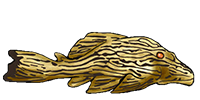The trees proposed by de Pinna (1998), Diogo (2004) and Sullivan et al (2006) are all pretty different, and I am having difficulty in reconciling the biogeographic patterns.
The Loricarioidei are generally regarded as monophyletic, and as being one of (if not the) most plesiomorphic clades within the siluriformes.
Yet, they are only found in the neotropics. I would expect this most basal clade to have an African and/or even Asian distribution given its potential age.
Can we assume an ancestral distribution and subsequent extinction of the Loricarioidei in Africa, or some sort of event preventing their migration to the "old world"?
If we follow Sullivan (2006) for now, how are the two South American only clades (cet, asp, auc, dor) (pse, pim, hep) nested within Asian and African clades?
For this, would we have to assume the South American distribution and subsequent extinction of ancestral clariids, bagrids, sisorids and silurids etc?
Is it generally assumed that centres of origin can be indicated by the presence of apomorphic or pleisomorphic groups? Authors seem not to agree on this.
Also, has it been resolved to any degree of confidence that the gymnotiformes and siluriformes are together sister to the characiformes, or that the characiformes and gymnotiformes are together sister to the siluriformes? Saitoh et al (2003) summarise the research, but I can't work out which hypothesis they are in favour of.
Anyway, thanks very much to anyone who can be bothered to answer my questions.








